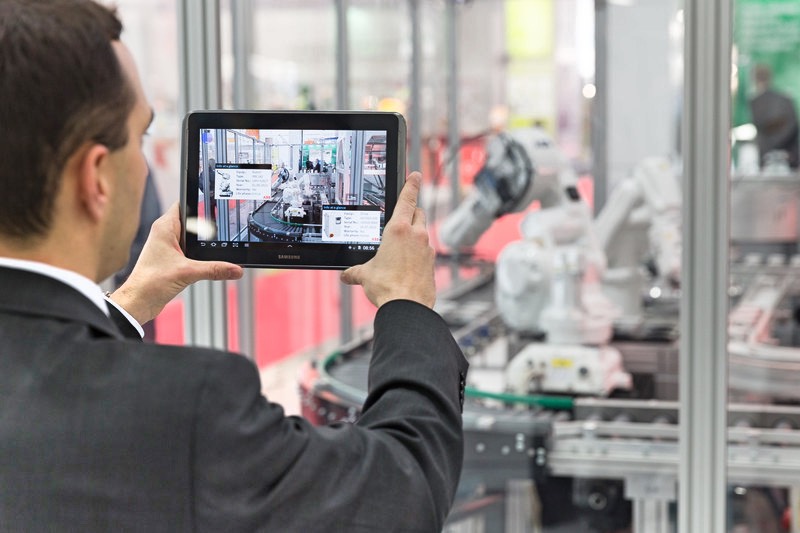 In the second part of our interview with Guido Jouret, Chief Digital Officer, ABB Group, we learn about the Group’s investment in emerging technologies and the business applications. Jouret spoke extensively about Augmented Reality and how it will revolutionise the Manufacturing, Oil & Gas and other industries. ABB is currently working on 45 AR projects
In the second part of our interview with Guido Jouret, Chief Digital Officer, ABB Group, we learn about the Group’s investment in emerging technologies and the business applications. Jouret spoke extensively about Augmented Reality and how it will revolutionise the Manufacturing, Oil & Gas and other industries. ABB is currently working on 45 AR projects
In case you missed the first part of the interview, you may read it here.
DC: Virtual Reality and Augmented Reality (VR/AR) have been consumer-facing technologies. What kind of challenges do you foresee as they come into the mainstream of business and industry? What is the opportunity for you?
Guido Jouret: This is part of a broader theme. We see plenty of consumer technologies not only on AR but also Blockchain and drones and other things, which are dual purpose. Yes, they were invented for a consumer market, but arguably the more interesting ROI, and certainly the more compelling use case, is in the business/industrial space.
So, for AR, what is the opportunity for us? First of all, I just want to say that we have over 45 augmented reality projects already underway inside of ABB, so it’s not something we’d like to do, it’s something we’re already doing.
It starts with what we call Digital Projects, a complex project like building a new electricity substation. The customer is involved; the engineering contractor is involved and ABB is involved. As you can imagine, all the equipment needed for building a house when you have an architect and a customer, and the builders — coordinating all these constituencies has historically meant that you might have a digital plant somewhere, but then you print it out and you mark it up, and then send it back.
What we are doing with AR is allowing everybody using essentially a Unity game engine with Hololens headsets — all of these people designing the substation can participate in real-time and we can manipulate the 3D design in real-time. (Looking at the design) we can say no, we want the stairs to go here and not there. We want this transformer to be over here. And in real-time people can collaborate; all the changes are made back into the CAD/CAM design. It updates the project plan and we can cut the time it takes to build a digital power station down from 14 months to about seven months. So, we cut it in half.
DC: Which industries will benefit from AR technology?
Guido Jouret: We serve customers in Oil & Gas who have a severe demographic problem. The average worker in the Oil & Gas industry is 55 (years of age); in the next 10 years they’re going to lose half of their experienced workers. Tomorrow they will hire a young engineer put them to work in an oil rig or on an oil well somewhere, and this person is potentially replacing very experienced workers. How do you deliver that expertise and know-how?
We believe that, especially for repair tasks, either using your smartphone and essentially launching an app, and then through the screen being walked through how to repair this device, is a form of AR that will take off. This is not about putting goggles on your head. We are looking at using the technology of smartphone and tablets.
If I have to disassemble this motor, I can see the motor through here (physically) and I get all the instructions delivered on my screen, with step-by-step instructions.
All of these things are much better than just producing a paper checklist. So, in many ways, we get to better quality or better safety results. And in these industries, which are losing these generations of workers, this is an imperative that they don’t see another way, in which they can face that challenge.
DC: Are you doing any projects for Autonomous Vehicles?
Guido Jouret: It could be in things like assisting, getting towards autonomous vessels. We have a marine business unit which is creating the same technology that you’re using for autonomous cars, with LIDAR (Light Detection And Ranging). By 2019 we will help to launch the first autonomous containership. This is going to allow that ship to navigate without a captain on the bridge. How would you actually like to be able to beam yourself into the bridge, just in case? So there again you could use AR. You could put on this Hololens headset and then essentially, you are on the bridge and you can look around through the cameras that are on the vessel. That gives you the ability to augment or to supplement.
Concluded.










